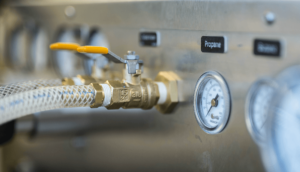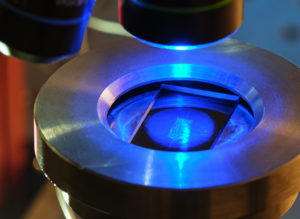With climate change dominating headlines, you’ve probably heard a thing or two about carbon capture and storage (CCS) – unless you’ve been living under a rock. If you haven’t, that’s not necessarily a bad thing. “Living” under a rock is exactly what operators hope to accomplish with injected CO2.
Carbon dioxide storage employs diverse mechanisms with varying degrees of maturity. It can take place in depleted oil and gas reservoirs and saline formations, be used for enhanced oil or gas recovery, or utilize ocean and mineral storage.
Out of these many storage options, saline aquifers are arguably the most promising, with an estimated global sequestration potential ranging between 8,000 and 55,000 billion tons of carbon dioxide.
According to a recent report, international CCS installed capacity is currently only 150 million metric tons of CO2 annually. For context, energy-related carbon emissions rose by 6% to a record 36.3 billion in 2021.
Despite its low adoption, industrial capture of emissions is actually effective, with facilities being able to capture over 90% of their emissions – putting aside how economically favorable it is for them to do so, which ultimately comes down to the price of carbon.
However, on the storage side, one of the potential hurdles facing widespread CCS implementation is the lack of understanding about how the injected carbon dioxide will behave underground.
The current inability to measure relevant conditions is exacerbated since:
- CCS employs industrial CO2 streams with impurities
- CCS operations utilize additives for injectivity enhancement
- CO2 is injected into chemically complex underground environments under extreme temperatures and pressures.
- The occurrence of salt and mineral precipitation or hydrate formation
Dealing with these challenges is exactly where Interface contributes value.
Oil and gas CCS
In depleted oil and gas reservoirs, sources of uncertainty result from co-injectants like H2S, naturally-occurring fluids, properties of the rock itself, and previously injected fluids.
This creates the potential for various interactions, which necessitates the presence of a testing system that can capture them.
Interface uses reservoir replicating microfluidic chips to conduct its tests. Here reservoir characteristics (including porosity, permeability, geometry, and wettability) are used to design a representative system.
Our MMP measurement test can be used to conduct a parametric sensitivity analysis that measures the impact additives and their concentrations have on the minimum miscibility pressure of the injected stream, thus ensuring cost-effective oil recovery.
Saline aquifers and carbon injection optimized
Another space operators can utilize our technology in is carbon storage in saline aquifers. For example, the microfluidic technology used to analyze salt precipitation during CO2 sequestration in saline aquifers has already been developed by Interface Fluidics co-founder Prof. Dave Sinton’s team at the University of Toronto.
The technology was used to analyze salt formation and its contribution to pore blockage and reduction in carbon storage injectivity.
Traditional software that predicts this is limited and requires experimental data for validation, while core scale experiments cannot resolve salt precipitation at the pore scale. As a result, microfluidic systems are an ideal choice for this analysis.
In Dr. Sinton’s work, the location of the CO2 phase, solution pH, and precipitation dynamics were tracked and quantified. Outcomes of this work provided insights into injection mechanisms, and the results were verified against core experiments.
This laid the foundation for Interface to apply its microfluidic platform to CCS operations and study a range of mechanisms. All experiments are conducted at reservoir temperature and pressure with the ability to reach 1000 bar at 200 °C.
All the fixings
Interface also screens a range of surfactants to add to CO2 pre-injection into brine reservoirs to increase its viscosity. The resulting foam supports CO2 entrapment by reducing its mobility.
The challenge here might sound familiar. Since storage reservoirs and water compositions vary globally, companies find themselves investing lots of time and money in foam stability optimization.
Interface’s proprietary technology helps resolve this. We use our microfluidic chips to screen multiple supercritical CO2 foams at differing conditions simultaneously.
We’ve recently worked with Saudi Aramco on a project that involved screening six commercially available surfactants. The increased number of measurements our technology delivers allowed for a sensitivity analysis where a top-performing additive and an optimal concentration were identified.
A matter of (expert) opinion
At Interface, we know the value our technology brings to our clients. To further explore all angles, we consulted with a CCS expert about the challenges facing the industry and how microfluidics can help make headway.
According to Reservoir Engineer Dwayne Purvis, another possible application of microfluidics is studying the dynamics of connate water interacting with other connate water.
When CO2 is injected into a brine reservoir, formation pressure increases. This may trigger induced seismicity, which is sometimes averted by removing brine from the reservoir equal to the amount of CO2 injected.
The removed brine is then re-injected into a stable formation where it can interact with the existing reservoir brine, leading to injectivity risks through the precipitation of solids.
Purvis sees microfluidics as a great way to study fluid interactions to accurately test brine-brine as well as CO2-brine compatibilities and mitigate damage. This is particularly valuable due to the industry’s limited experience with injecting into the hyper-saline, high-temperature, high-pressure water, he explains.
Another perk of microfluidic systems is the multiple-orders-of-magnitude increase in generated measurement points. This, done at a much lower cost, enables one to conduct data-rich sensitivity analyses to study how each parameter can affect performance.
By varying brine combinations and chemical concentrations, CO2 injectors can account for uncertainties in composition. This is particularly important when screening variables that – with a small change in concentration – can have a large impact, pushing the system past the solid precipitation threshold.
Purvis also confirms the limitation of computational models and their dependence on empirical validation. Laboratory tests are then essential inputs to fine-tune these models.
One opportunity is in improving the efficiency of direct air capture processes. It is anticipated that microfluidics will play an important role in screening new CO2 capture materials and fluids, which will require similar testing to the current PVT screening offered by Interface.
A way forward
For CCS to become a viable commercial option, the current technological limitations are not insurmountable. In fact, a lot of today’s technology can efficiently capture and store the polluting gas (albeit at a higher price point).
One deterrent holding this technology back is the absence of a universal price on carbon – whether governmentally or voluntarily imposed.
Companies have to be able to make money by putting gas underground, Purvis emphasizes. The good news is that voluntary markets are growing rapidly, with carbon prices beginning to reach a level that makes commercial CCS projects economically viable.
Government policy in the form of a carbon tax or a cap-and-trade system is an even greater driver, which economists agree is the best mechanism for emission reduction.
Purvis continued by saying that a carbon tax is a policy widely supported even by oil and gas organizations like the American Petroleum Institute, and it could be the start of a CCS gold rush.
Interface Fluidics has been helping clients make cleaner decisions by reducing their chemical and freshwater consumption. We have the technology to contribute to the decarbonization of our atmosphere through carbon storage in various formations.
Contact us today for an in-depth analysis of your reservoir problems and the role our technology has to play in providing you with faster data, better decisions, and lower emissions.




